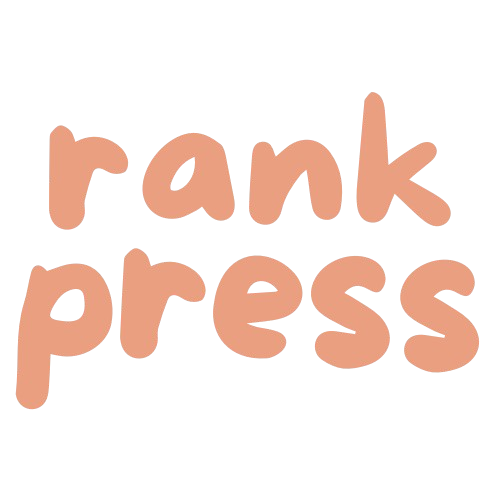RankPress vs Manual WordPress SEO: A Cost-Benefit Analysis for Business Owners in 2024
The landscape of WordPress SEO has evolved dramatically in 2024, presenting business owners with a crucial decision: should they embrace automated solutions like RankPress or stick with traditional manual SEO approaches? With WordPress powering over 43% of all websites and search engines processing over 8.5 billion searches daily, the stakes for effective SEO have never been higher. This comprehensive analysis will help you make an informed decision about how to boost SEO WordPress performance effectively, examining both approaches’ costs, benefits, and practical implications for businesses of varying sizes.
Understanding the Basics
RankPress represents the new wave of AI-powered SEO automation tools designed specifically for WordPress websites. This innovative platform integrates directly with WordPress, automatically optimizing various aspects of your website’s SEO performance. According to recent studies, automated SEO tools can reduce optimization time by up to 70% while maintaining consistent quality across all pages. RankPress handles everything from meta tag generation to content analysis, image optimization, and technical SEO adjustments. The system continuously monitors your site’s performance against Core Web Vitals metrics, making real-time adjustments to maintain optimal search engine visibility.
Manual WordPress SEO involves hands-on management of your website’s optimization efforts. This traditional approach requires a deep understanding of SEO principles, regular monitoring of search engine algorithm updates, and direct implementation of optimization strategies. While more time-intensive, it offers complete control over your SEO strategy and allows for highly customized approaches to match your specific business needs.
Cost Analysis
When evaluating RankPress, businesses must consider both immediate and long-term financial commitments. The platform typically operates on a subscription model, with pricing tiers based on website size and feature requirements. Basic plans start at $29/month, while enterprise solutions can range from $199-$499/month. Implementation costs are generally minimal, as the system is designed for straightforward integration with WordPress. However, some initial training may be necessary to maximize the platform’s potential.
Manual SEO expenses can be more variable and often include multiple components:
– Essential tools and plugins: $50-$500 monthly
– SEO consultant rates: $75-$200 per hour
– Staff training: $500-$2,000 per person
– Ongoing education: $200-$500 monthly
– Content creation: $500-$5,000 monthly
Performance Benefits
RankPress shines in its ability to automate routine SEO tasks and maintain consistent optimization across your website. The platform’s AI-driven approach can quickly identify and address technical issues, optimize content structure, and adjust to search engine algorithm changes. Recent data shows that websites using automated SEO tools experience an average 32% improvement in search rankings within the first three months.
Manual SEO’s primary advantage lies in its flexibility and potential for deep customization. Experienced SEO professionals can craft highly targeted strategies, respond to unique market conditions, and implement advanced techniques that automated systems might miss. This approach allows for more creative problem-solving and the ability to capitalize on emerging opportunities quickly.
Implementation Challenges
Setting up RankPress requires some initial configuration and familiarization with the platform’s features. While the system is designed to be user-friendly, business owners may encounter integration challenges with existing plugins or custom WordPress configurations. However, these issues are typically resolved through the platform’s support system, with an average setup time of 2-4 hours.
Manual SEO implementation presents more significant challenges, particularly for businesses without dedicated SEO expertise. The learning curve is steep, requiring understanding of technical concepts, content optimization principles, and search engine guidelines. Studies indicate that it takes an average of 6-12 months to develop proficiency in manual SEO techniques.
Business Size Considerations
Small businesses often find RankPress’s automated approach particularly attractive due to limited resources and the need for efficient operations. The platform’s ability to handle multiple SEO tasks simultaneously can effectively replace the need for a dedicated SEO team, making it a cost-effective solution for growing businesses.
Larger enterprises may benefit from a hybrid approach, combining RankPress’s automation capabilities with manual oversight from experienced SEO professionals. This allows for both efficient routine optimization and strategic customization where needed. The scalability of automated systems becomes particularly valuable as website content and complexity grow.
Future-Proofing Your Choice
The SEO landscape continues to evolve rapidly, with artificial intelligence and machine learning playing increasingly important roles. RankPress’s development team regularly updates the platform to incorporate new SEO trends and algorithm changes, providing some measure of future-proofing for your optimization efforts.
Manual SEO practitioners must constantly adapt to new technologies and methodologies, which can be both challenging and advantageous. The ability to quickly pivot strategies and implement emerging best practices can provide a competitive edge, though it requires significant ongoing effort to maintain this advantage.
Conclusion
The choice between RankPress and manual SEO ultimately depends on your business’s specific circumstances, resources, and goals. For many small to medium-sized businesses, RankPress offers an efficient, cost-effective solution that delivers consistent results with minimal oversight. Larger organizations or those with unique SEO requirements may benefit from combining automated tools with manual expertise. Consider your available resources, technical capabilities, and long-term digital marketing objectives when making your decision.
